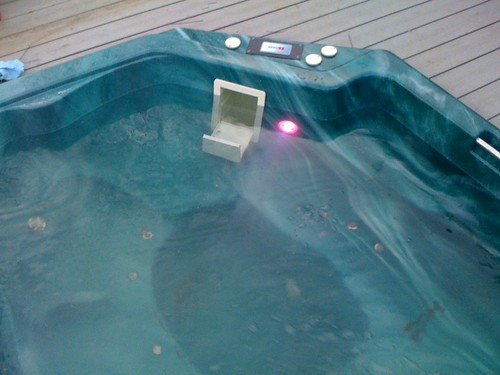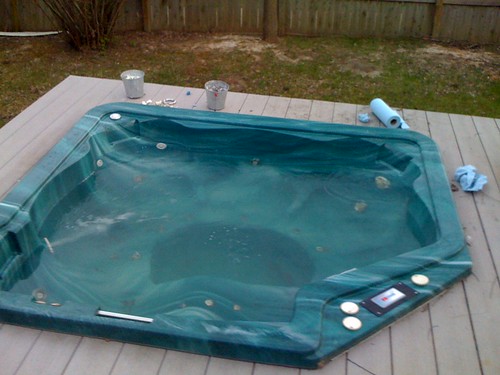Okay, so after years of futzing, I’ve finally gotten my hot tub running (from spare parts and a used tub shell). 



So here’s where I need help - that control panel above, what is called “topside controller” - It’s for a Gecko (Spa Builders) S-Series controller, model K-18. I want to read that output and be able to track it from my computer. It’s three segmented led displays, like this:
http://www.thelearningpit.com/lp/doc/7seg/7seg.html
My question is this: is there any easy way to accomplish this? If I’m reading correctly, there are 8 pins on each led - ground + A-G. I could run a weatherproof cat5 cable out to the topside, and there is an IC in it, coated in silicon goo. It’s probably an LED controller, if I recall there were 5 wires running to it. Extra credit would be to read the 5 status LED’s at the top, and extra double-plus credit would be to allow me to send the button presses for the 4 microswiches (that last one really is one button - press it once and hold, the temperature starts cycling up, press again, it cycles down). The reason for this is that I’m paranoid about the whole thing freezing up this winter, and would like to have access to the topside controller.
Please note, if you can tell me how to read the state for each segment, I can sort it out in code to charaters. I know perl, this isn’t hard. I can simply make a hash like this:
my $led = {
a => 0,
b => 0,
c => 0,
d => 0,
e => 0,
f => 0,
g => 0,
};
The ones that are on I’d simply change to a 1, then I could convert my hash to a character, for example the letter “F” would be this:
my $led = {
a => 1,
b => 0,
c => 0,
d => 0,
e => 1,
f => 1,
g => 1,
};
The number “8” would be all 1’s, “A” is the same, only d => 0. You get the idea. Any ideas on how I can do this?

